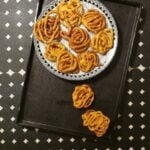Are you looking to elevate your cake decorating skills? Learn how to make whipped cream frosting for cake decorating and discover the versatility and lightness that this type of frosting can add to your baked creations. Homemade whipped cream frosting offers a delightful alternative to store-bought options, allowing for greater customization and flavor variations.
Whipped cream frosting is beloved for its airy texture and subtle sweetness, making it a popular choice for those seeking a lighter alternative to buttercream or fondant. In this article, we will explore the basics of making whipped cream frosting, from the necessary ingredients to step-by-step instructions on how to whip and sweeten the cream. Additionally, we will delve into tips and tricks for achieving the perfect consistency and stiffness for piping and decorating with whipped cream frosting.
Whether you’re a baking enthusiast or a professional pastry chef, mastering the art of whipped cream frosting can open up a world of creative possibilities. From flavoring with extracts and fruit purees to coloring with gel food coloring, there are numerous ways to customize your whipped cream frosting to suit different themes and occasions. Join us as we explore the enchanting world of whipped cream frosting for cake decorating, from technique tutorials to delicious recipe recommendations.
The Basics of Making Whipped Cream Frosting
Making whipped cream frosting for cake decorating is a simple yet essential skill for any baker or home cook. The light and fluffy texture of whipped cream makes it a favorite choice for decorating cakes, cupcakes, and other desserts. In this section, we will cover the basics of making whipped cream frosting, including the necessary ingredients and step-by-step instructions.
To make whipped cream frosting, you will need heavy whipping cream, confectioners’ sugar (also known as powdered sugar), and vanilla extract. The heavy whipping cream serves as the base of the frosting, providing the light and airy texture that is characteristic of whipped cream. The confectioners’ sugar sweetens the frosting and helps stabilize the whipped cream, while the vanilla extract adds flavor.
To begin making whipped cream frosting, start by chilling your mixing bowl and beaters in the refrigerator for at least 15 minutes. This helps to keep the heavy whipping cream cold during the whipping process, which makes it easier to achieve stiff peaks.
Once chilled, pour the heavy whipping cream into the mixing bowl and add in the confectioners’ sugar and vanilla extract. Using a hand mixer or stand mixer fitted with a whisk attachment, start mixing on low speed and gradually increase to high speed until stiff peaks form.
Achieving stiff peaks is crucial when making whipped cream frosting for cake decorating. Stiff peaks mean that when you lift the beaters out of the frosting, a peak forms and holds its shape without collapsing. This consistency is necessary for piping elaborate designs onto cakes or cupcakes.
Incorporating these steps into your own kitchen will help you master how to make whipped cream frosting for cake decorating effortlessly.
| Ingredients | Amount |
|---|---|
| Heavy Whipping Cream | 1 cup |
| Confectioners’ Sugar (Powdered Sugar) | 2-3 tablespoons |
| Vanilla Extract | 1/2 teaspoon |
Tips and Tricks for Perfect Whipped Cream Frosting
Whipped cream frosting is a delightful and versatile option for cake decorating, offering a light and airy texture that complements a variety of cake flavors. Making your own whipped cream frosting at home not only allows you to control the sweetness and flavor but also results in a fresher and more natural taste compared to store-bought options. In this section, we will delve into some essential tips and tricks for achieving the perfect whipped cream frosting for your cakes.
When it comes to making whipped cream frosting, using cold heavy whipping cream is crucial for achieving the desired texture. The fat content in heavy whipping cream allows it to whip up into stiff peaks, providing the stability needed for cake decorating.
Whether you choose to whip the cream by hand or with a stand mixer, it’s important to ensure that the equipment and bowl are chilled before beginning the process. This helps the cream whip up faster and more evenly.
Achieving stiff peaks in your whipped cream frosting is essential for creating beautifully piped designs and decorations on your cakes. To test if your whipped cream has reached stiff peaks, simply lift the beater or whisk out of the mixture; if the peaks hold their shape without collapsing, then you have achieved the right consistency. Over-whipping can lead to butter forming in your mixture, so be sure to stop at just right point.
Another tip for perfecting whipped cream frosting is adding sweeteners such as powdered sugar or vanilla extract gradually during the whipping process. This prevents over-sweetening and ensures that the flavors are well incorporated throughout the frosting. With these tips and tricks in mind, you’ll be well-equipped to create beautifully decorated cakes with homemade whipped cream frosting.
| Whipped Cream Frosting Tip | Description |
|---|---|
| Use Cold Heavy Whipping Cream | Chilled heavy whipping cream whips up better and creates a stable texture. |
| Achieving Stiff Peaks | Test if your whipped cream has reached stiff peaks by lifting the whisk; peaks should hold their shape. |
| Gradually Add Sweeteners | Add powdered sugar or vanilla extract slowly during whipping to prevent over-sweetening. |
Flavoring Whipped Cream Frosting
When it comes to decorating cakes with whipped cream frosting, adding flavor is a great way to elevate the taste of your creation. Whether you’re looking for something classic like vanilla or chocolate, or want to experiment with unique flavors like fruit purees, there are endless possibilities for customizing your whipped cream frosting.
Exploring Different Flavors and Extracts
One of the simplest ways to add flavor to whipped cream frosting is by using extracts such as vanilla, almond, or even coconut. These extracts not only add delicious flavor but also complement the light and airy texture of the whipped cream. For those looking for a more intense flavor experience, consider using high-quality extracts that pack a punch without overpowering the delicate nature of the whipped cream.
If you’re feeling adventurous, consider incorporating fruit purees into your whipped cream frosting for a burst of natural fruity flavor. From strawberries and raspberries to mangoes and passionfruit, fruit purees can be folded into the whipped cream to create a vibrant and refreshing frosting.
Tips for Incorporating Fruit Purees and Chocolate
When adding fruit purees or chocolate to whipped cream frosting, it’s important to do so carefully to avoid compromising the texture of the frosting. To prevent the whipped cream from becoming runny, start by gently folding in small amounts of the puree or melted chocolate at a time. This gradual approach ensures that the whipped cream maintains its light and fluffy consistency while still incorporating the desired flavors.
Experimenting with different flavor combinations is part of what makes homemade whipped cream frosting so appealing. Whether you prefer traditional flavors or want to try something new and exciting, there’s no limit to how you can personalize your whipped cream frosting for cake decorating. With just a few simple adjustments, you can transform a basic batch of whipped cream into a mouthwatering frosting that perfectly complements your cake.
Coloring Whipped Cream Frosting
When it comes to cake decorating, adding a pop of color can really take your creation to the next level. With whipped cream frosting, you have the option to easily add beautiful colors without compromising the light and airy texture. Here are some tips on how to safely and effectively color your whipped cream frosting for stunning cakes and desserts.
- Choose gel food coloring: Gel food coloring is best for coloring whipped cream frosting as it adds vibrant hues without adding extra liquid that could affect the texture of the frosting.
- Add color gradually: Start by adding a small amount of gel food coloring to your whipped cream and mix until fully incorporated. You can gradually add more coloring as needed to achieve your desired shade.
- Avoid overmixing: When adding food coloring, be mindful not to overmix the whipped cream frosting, as this can cause it to become too dense and lose its lightness.
Achieving vibrant and pastel colors with whipped cream frosting is definitely possible with the right techniques. It’s all about being gentle with the mixing process and using the right type of food coloring. Whether you’re going for a soft pink or a bold purple, coloring your whipped cream frosting can truly elevate the overall look of your cakes.
Remember that experimentation is key when it comes to creating beautifully colored whipped cream frosting. Don’t be afraid to try different combinations of gel food coloring or even mix multiple colors together for a unique look. The possibilities are endless when it comes to creating stunning colored whipped cream frosting for cake decorating.
Using Whipped Cream Frosting for Cake Decorating
When it comes to cake decorating, whipped cream frosting offers a light and airy option that is not only delicious but also versatile in creating beautiful designs. Whether you are frosting a simple birthday cake or a more elaborate wedding cake, whipped cream frosting can be the perfect choice for achieving a soft and elegant look.
Techniques for Piping and Frosting
One of the main advantages of using whipped cream frosting for cake decorating is its ability to be piped into various designs. From rosettes and swirls to intricate borders, whipped cream can be easily manipulated to create stunning decorations on cakes. To achieve different textures and designs, varying piping tips can be used. For example, a star tip can create beautiful rosettes, while a round tip can produce smooth borders.
When frosting a cake with whipped cream, it’s important to apply an even layer on the top and sides of the cake. Using an offset spatula can help achieve a smooth finish on the surface of the cake. Additionally, gently pressing the side of the spatula against the whipped cream frosting can create subtle lines or textures for added visual interest.
Achieving Smooth Finishes and Intricate Designs
To create perfectly smooth finishes when working with whipped cream frosting, chilling the frosted cake is key. After applying the initial layer of whipped cream, refrigerate the cake for at least 30 minutes before adding additional decorations or smoothing out any imperfections with additional frosting.
For those looking to create intricate designs with whipped cream frosting, utilizing stencils or templates can be helpful. Simply place a stencil onto the surface of the frosted cake and carefully pat some powdered sugar over it. When removed, it will reveal a beautifully decorated design without compromising the delicate texture of the whipped cream frosting.
With these techniques in mind, using whipped cream frosting for cake decorating can open up endless possibilities for creating visually stunning and delicious treats.
Storing and Serving Whipped Cream-Frosted Cakes
Once you’ve beautifully decorated a cake with whipped cream frosting, it’s important to know how to properly store and serve it to maintain its texture and flavor. Here are some tips for ensuring that your whipped cream-frosted cakes stay fresh and delicious:
- Storing Whipped Cream-Frosted Cakes:
- Store the cake in the refrigerator: Whipped cream frosting is perishable and should be kept refrigerated. Make sure to cover the cake with a cake dome or plastic wrap to prevent it from absorbing any odors from the fridge.
- Avoid leaving the cake at room temperature for too long: Whipped cream frosting can melt or become runny if left out at room temperature for an extended period of time. If the weather is particularly warm, it’s best to keep the cake refrigerated until just before serving.
- Serving Whipped Cream-Frosted Cakes:
- Allow the cake to come to room temperature before serving: While the cake should be stored in the refrigerator, it’s best enjoyed when served at room temperature. Take the cake out of the fridge 30 minutes to an hour before serving to allow the whipped cream frosting to soften slightly.
- Use a sharp knife for slicing: When serving, use a sharp knife that has been run under hot water and wiped dry for clean slices. This will help prevent smearing of the frosting as you cut into the cake.
These tips will help ensure that your whipped cream-frosted cakes look and taste their best when it’s time to serve them. By properly storing and serving your cakes, you can enjoy their light and fluffy whipped cream frosting without any worry about compromising its quality.
Remember that while whipped cream frosting adds a delightful touch to cakes, it does require a bit more care than buttercream or fondant frostings. With proper storage and handling, you can showcase your beautiful creations without sacrificing flavor or texture.
Whipped Cream Frosting Recipe Roundup
When it comes to cake decorating, whipped cream frosting offers a light and versatile option that’s perfect for both casual and formal occasions. The appeal of homemade whipped cream frosting lies in its freshness and the ability to customize the flavor to suit different types of cakes and desserts. This section will provide a collection of delicious whipped cream frosting recipes that can be tailored to individual preferences.
For those looking for a classic vanilla-flavored whipped cream frosting, simply combine heavy whipping cream, powdered sugar, and vanilla extract until stiff peaks form. This simple recipe is a great base for various cake flavors and can be easily adjusted by adding different extracts or flavors such as almond, coconut, or citrus zest.
For chocolate lovers, incorporating cocoa powder into the whipped cream frosting creates a rich and decadent option that pairs beautifully with chocolate cakes or as a filling for other desserts. Adding melted dark chocolate to the whipped cream base also creates a luscious and creamy chocolate variation that can elevate any dessert.
For those seeking fruity flavors, consider blending fresh fruit purees into the whipped cream frosting for a burst of natural sweetness. Whether it’s strawberries, raspberries, or passion fruit, incorporating fruit purees not only adds flavor but also gives the frosting a lovely pastel hue. Just be sure to adjust the amount of sugar in the recipe accordingly to balance the tartness of the fruit.
With these recipe options at hand, readers can confidently experiment with different variations of whipped cream frosting for their cakes and desserts. The possibilities are endless when it comes to customizing this delightful topping to create beautiful and delicious creations.
Conclusion
In conclusion, mastering the art of whipped cream frosting for cake decorating opens up a world of creative possibilities for bakers and dessert enthusiasts. The lightness, versatility, and delicious flavor of homemade whipped cream frosting make it a popular choice for adorning cakes of all kinds. By following the basics of making whipped cream frosting and learning tips and tricks for perfecting its texture, flavoring, and coloring, anyone can elevate their cake decorating skills to new heights.
Experimenting with different flavors and extracts, as well as incorporating fruit purees and chocolate into whipped cream frosting, allows for endless customization to suit individual preferences. Additionally, learning how to safely color whipped cream frosting using gel food coloring provides the opportunity to achieve a spectrum of vibrant hues without compromising the delicate texture of the frosting. With these techniques in hand, decorators can create stunning cakes that are not only visually appealing but also incredibly delicious.
Ultimately, mastering whipped cream frosting for cake decorating is a rewarding journey that allows for creative expression in the kitchen. The ability to pipe and frost cakes with smooth finishes and intricate designs using whipped cream opens up endless possibilities for dazzling dessert creations.
With proper storage practices in mind, anyone can confidently serve and display their beautifully frosted cakes to impress friends, family, or customers. The key is experimentation – never be afraid to mix and match flavors or try out new decorating techniques when it comes to creating your own whipped cream frosting masterpieces.
Frequently Asked Questions
How Do You Stiffen Whipped Cream for Piping?
To stiffen whipped cream for piping, it’s important to start with heavy cream that has a high fat content. Make sure the bowl and beaters are cold, then whip the cream until soft peaks form. Gradually add powdered sugar and vanilla extract while continuing to whip until stiff peaks form.
Can I Use Whipped Cream for Cake Decorating?
Whipped cream can definitely be used for cake decorating, especially if the cake is going to be served and eaten relatively soon. It’s important to stabilize the whipped cream with gelatin or another stabilizer if you want it to hold its shape for a longer period of time or in warmer conditions.
What Is the Best Cream for Cake Decorating?
The best cream for cake decorating is heavy whipping cream because of its high fat content, which allows it to hold its shape well when whipped. It’s important to make sure the heavy cream is cold before whipping it, as this will help it reach stiff peaks more easily.
Adding a stabilizer like gelatin can also help improve its stability for decorating cakes.

Welcome to my blog about home and family. This blog is a place where I will share my thoughts, ideas, and experiences related to these important topics. I am a stay-at-home mom with two young children. I hope you enjoy reading it! and may find some helpful tips and ideas that will make your home and family life even better!





